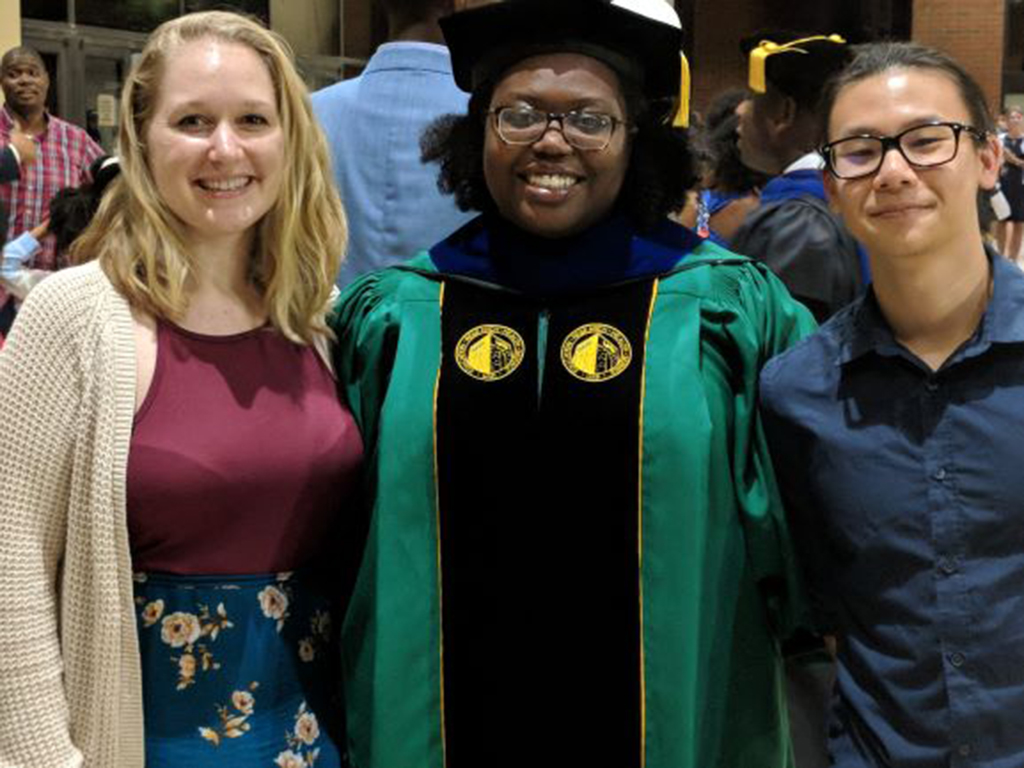

Amy Weinmann, Ph.D., professor in the Department of Microbiology, is the latest winner of the School of Medicine’s Featured Discovery. This initiative celebrates important research from the School of Medicine faculty members.
Recently, her study “Defining Genetic Variation in Widely Used Congenic and Backcrossed Mouse Models Reveals Varied Regulation of Genes Important for Immune Responses,” was published in Immunity. Weinmann and her team discovered that congenic mouse strains—used for decades in immunology research and assumed to be genetically identical outside of a marker locus—contain previously unrecognized genetic variation. The team discovered this genetic variation when performing experiments to define the effects of microbial metabolites on T cells. Conflicting data from these experiments prompted several questions that led to this discovery. The team’s finding offers new insight into the genetic content of mouse models that are commonly used in immunology research. Importantly, it also provides a new strategy that researchers can use to define regions with genetic variation in any mouse model.
Danielle Chisolm, Ph.D., former graduate student in the Weinmann lab who is now a postdoctoral fellow at the National Institutes of Health, is the first author of the paper and led the research project. Wayne Cheng and Shelby Colburn, research technicians in the Weinmann lab in the Department of Microbiology, were also a part of the research team. (Chisolm [middle], Colburn [left], and Cheng [right] are pictured).
The novel findings suggest that the exact strains and sources of mice need to be reported in all studies, and researchers need to design experiments with these genetic variables in mind. Read more about Dr. Weinmann’s study from UAB News here.
The School of Medicine communications staff sat down with Dr. Weinmann to gain insights about her research, UAB, and the science community.
Q: What compelled you to pursue this research?
The simple answer is we just followed the data and did not give up until we found an answer. This project is a testament to determination and being open-minded.
Q: What was your most unexpected finding?
This study is a perfect example of following the data wherever it leads, being unbiased in interpreting results, and not forcing the data to fit a hypothesis. We started out trying to answer a question about the role for metabolites in T cell differentiation and ended up developing new strategies to define genetic variation in congenic mouse models.
Q: How do you feel your research will impact the science community? What is your research’s relevance to human disease?
The immediate implication for this research is that it highlights the importance of accounting for genetic variables in widely used mouse models in immunology research, as well as the research in other scientific disciplines. Perhaps more exciting, this research reminds us that genetic diversity is an important variable to think about when trying to translate research principles defined in model organisms into information about human health and disease.
Q: When did you know you had an important discovery?
We knew this was important when we realized our missing variable was genetic. This turned into an incredibly fun project because it required us to be creative, unbiased, and methodical in how we designed and interpreted experiments to find an unknown variable that affects a wide-range of immunology research. The team in my lab was fantastic and deserves all the credit. Dr. Danielle Chisolm expertly led us on this adventure, and our team also included two talented research technicians Wayne Cheng and Shelby Colburn. In addition, we worked with UAB colleagues Dr. Troy Randall, Dr. Selene Meza-Perez, and Dr. Aaron Silva-Sanchez for this study.